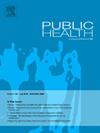A qualitative study of firearm injury survivors’ views on contributing factors and solutions to community violence
IF 3.9
3区 医学
Q1 PUBLIC, ENVIRONMENTAL & OCCUPATIONAL HEALTH
引用次数: 0
Abstract
Objectives
The objective of this study was to elucidate reasons for and solutions to community firearm violence from firearm injury survivors after the COVID-19 pandemic.
Study design
This was a qualitative study secondary analysis. The original study question focused on participant engagement with medical and mental health services after their firearm injuries.
Methods
Individual in-depth interviews were completed with participants who were community-dwelling survivors of firearm injury using an interview facilitator guide. The interviews were analyzed using narrative content analysis and were coded independently by two researchers.
Results
Eighteen interviews were completed. Reasons for violence included prevalence of guns, flexing, stealing/robbery, beefs, COVID, and drugs, gangs, and music. Solutions to decrease community violence included limiting gun access, unknown, increase community cohesion, replacing rap music with positive role models, increasing policing and criminal penalties for violent acts, and people minding their own business.
Conclusions
This qualitative study of firearm injury survivors after the increase in violence surrounding the COVID-19 pandemic support a multifaceted approach for community violence prevention with limiting firearm access and strengthening community connectedness as top priorities.
枪械伤害幸存者对社区暴力成因及解决方法看法的质性研究
目的本研究的目的是阐明2019冠状病毒病大流行后枪伤幸存者社区枪支暴力的原因和解决方案。研究设计这是一项定性研究,二级分析。最初的研究问题侧重于参与者在枪伤后与医疗和心理健康服务的接触。方法采用访谈引导者指南,对社区居住的枪支伤害幸存者进行个人深度访谈。访谈采用叙事内容分析进行分析,并由两位研究者独立编码。结果共完成访谈18次。暴力的原因包括枪支、暴力、偷窃/抢劫、牛肉、新冠病毒、毒品、帮派和音乐的流行。减少社区暴力的解决方案包括限制枪支获取,未知,增加社区凝聚力,用积极的榜样代替说唱音乐,增加对暴力行为的警务和刑事处罚,以及人们关注自己的事业。这项针对2019冠状病毒病(COVID-19)大流行引发的暴力事件增加后枪支伤害幸存者的定性研究支持采取多方面的方法预防社区暴力,将限制枪支获取和加强社区连通性作为首要任务。
本文章由计算机程序翻译,如有差异,请以英文原文为准。
求助全文
约1分钟内获得全文
求助全文
来源期刊

Public Health
医学-公共卫生、环境卫生与职业卫生
CiteScore
7.60
自引率
0.00%
发文量
280
审稿时长
37 days
期刊介绍:
Public Health is an international, multidisciplinary peer-reviewed journal. It publishes original papers, reviews and short reports on all aspects of the science, philosophy, and practice of public health.
 求助内容:
求助内容: 应助结果提醒方式:
应助结果提醒方式:


